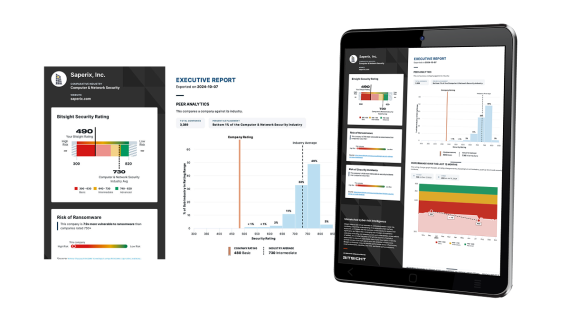Request a free executive report, which includes your security rating, for your company to find the gaps in your security program and how you compare to others in your industry.
Maximize Your Cybersecurity ROI With Financial Quantification
Tags:

According to a Cybersecurity Ventures report, global cybercrime costs are expected to grow by 15% per year over the next five years — reaching $10.5 trillion USD annually by 2025. In light of this evolving threat environment and recent widespread security events, today’s cybersecurity leaders are under more pressure than ever to prove that their investments in their programs are actually paying off.
Of course, in order to drive strategic cybersecurity ROI conversations with non-technical stakeholders and the board, CISOs need to be able to assess and report on cyber risk in a language that makes sense to the business: in terms of its financial impact.
Prioritize new technology investments based on risk reduction
As the risk profile of an organization frequently changes, the ability to make data-driven decisions on where to focus your organization’s cybersecurity efforts is more important than ever before. By prioritizing new technology investments based on risk reduction, you can optimize your organization’s cybersecurity ROI. Once you have assessed your current cybersecurity posture and identified your cybersecurity gaps, you should be asking yourself the following types of questions:
- Which gaps would be the most impactful to remediate in terms of my organization’s security posture?
- How much would the necessary controls cost? Can our organization afford it?
With Bitsight Financial Quantification for Enterprise Cyber Risk, it’s faster and easier than ever to assess and communicate how your organization’s financial exposure changes as you invest in controls to improve your security posture. Our solution delivers an efficient and easily repeatable means to quantify your organization’s cyber risk financially.
Armed with these insights into your probable maximum loss, you can make more informed decisions around which risks to accept, mitigate, or transfer — and where to focus your team’s limited time, resources, and budget to achieve the greatest security performance impact.
Plan for the future with increased confidence
In order to create informed plans of action to execute on your organization’s security goals, you need the right performance data at your fingertips. This requires moving beyond point-in-time, compliance-based reviews of your cybersecurity program so that you can effectively track performance over time.
That’s where Bitsight Security Ratings come in, making it easier than ever to assess your real-time security posture across risk vectors that fall into the following four categories: compromised systems, diligence, user behavior, and public disclosures. Based on independent, objective, and comparable data, this standardized KPI empowers you to evaluate the effectiveness of your current security program and develop strategic plans to address any security performance gaps.

Bitsight Financial Quantification for Enterprise Cyber Risk complements your security rating by using multiple data sets from real-world cyber events to simulate financial exposure across the following business impact scenarios:
- Denial of service incidents: Events that are meant to shut down a machine or network, making it inaccessible to its intended users
- Ransomware and extortion attacks: Campaigns that infiltrate organizations by exploiting unpatched software vulnerabilities that can expose the organization to major data losses or extortion in exchange for the data returned
- Data theft and privacy: The act of stealing digital assets stored on computers, servers, or electronic devices with the intent to compromise privacy or obtain confidential information
- Third-party service provider failures: An outage, a degradation, or a disruption at the source causing the service provided to be temporarily unavailable or unreliable — or a malicious attack or event leading to data leakage, data alteration, or interruption of the service used
- Regulatory compliance issues: The failure to meet specific cybersecurity standards and regulations
- Third-party liability: Compensation claims against the organization when it’s believed that the organization is responsible for a third party’s damages or losses
The context and visibility provided through this combined set of metrics uniquely enable you to view cyber risk through the lens of the potential business impact — and facilitate resource prioritization and future planning with increased confidence.
Make more informed cybersecurity ROI decisions
Armed with data-driven insights into your organization’s security performance and financial exposure, you can present a clear, outcome-driven plan to business leaders on how to continuously improve your program and get the most out of your cybersecurity investments.
Interested in learning more about how Financial Quantification for Enterprise Cyber Risk empowers you to streamline your process for making informed business decisions? Book a demo to see Bitsight Financial Quantification in action.


